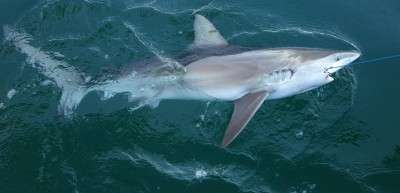Some shark species more likely to die during fisheries capture than others

A team of researchers from Monash University, in collaboration with Flinders University has, for the first time, investigated how varied breathing modes of different shark species affect the chances of shark and ray death during fisheries capture.
The results will enable scientists to work with fisheries managers in identifying priority research and management strategies to protect these more vulnerable species, many of which are threatened with extinction.
Lead researcher, Monash University PhD student Derek Dapp explained that approximately 100 million sharks are caught worldwide each year, with many of these accidentally captured by fisheries targeting other species of fish.
"Sharks can die during capture owing to physical injury or suffocation, but until now the sensitivity of different species has not been well understood," Mr Dapp said.
"A quarter of shark and ray species are threatened with extinction, so urgent action is needed to improve their chances of survival."
The research team analysed data on over 80 species of shark and ray caught by commercial fishing techniques including longlines, gillnets, and trawls. Species such as gummy sharks that are able to breathe while resting using a special respiratory opening called a spiracle, generally survived much better than those that need to continuously swim forward to breathe such as hammerhead and mako sharks.
In fact the research indicates the average mortality rates of these active species could be as high as 84 per cent during fisheries capture.
Joint lead researcher Associate Professor Richard Reina from Monash explained why active species, such as mako sharks, are more likely to die during capture.
"All commonly used commercial fishing techniques reduce a shark's ability to swim forward, so as soon as they are captured, active sharks begin to suffocate on fishing gear. Active sharks are unlikely to survive when they experience long capture times because they are unable to breathe effectively, while less active species that use a spiracle are much more tolerant to prolonged capture," Associate Professor Reina said.
"There are over 1000 species of sharks and rays, but the chance of death during fisheries capture is estimated for less than 10 per cent of these species. Our research identifies a very large group of sharks potentially vulnerable to fisheries capture.
"Now that we've identified why some species are more likely to die during capture, we can begin to work with fisheries managers to design fishing strategies that reduce the impact on these species and halt the overall decline in shark populations."
The findings were published in the leading fisheries journal, Fish and Fisheries.
More information: "Respiratory mode and gear type are important determinants of elasmobranch immediate and post-release mortality." Fish and Fisheries. doi: 10.1111/faf.12124
Journal information: Fish and Fisheries
Provided by Monash University

















